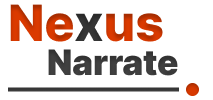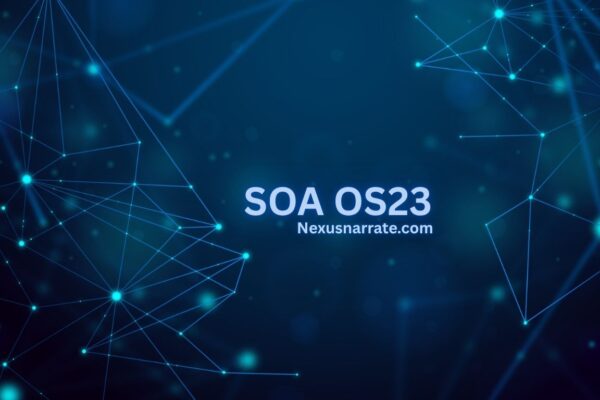ECMISS, or the Enterprise Collaborative Management Information System Solution, is transforming how businesses operate. In a world where efficiency and collaboration reign supreme, it stands at the forefront of innovation. It streamlines processes, enhances communication, and ultimately drives growth. But what exactly is it? And why does it matter now more than ever? Let’s delve into this powerful tool that’s paving the way for future business success.
ECMISS Explained: What It Is and Why It Matters
ECMISS integrates various business processes, creating a unified platform for information sharing. It fosters collaboration among teams, ensuring everyone is on the same page.
This system enhances decision-making by providing real-time data access. With it, businesses can adapt quickly to changing markets and customer needs, making it an essential tool in today’s competitive landscape.
Introducing ECMISS
ECMISS, or Enterprise Compliance Management Information System Solutions, is a powerful tool designed to streamline compliance processes across various industries. It integrates data management and regulatory requirements into one cohesive platform.
By utilizing it, organizations can efficiently track compliance activities, manage risks, and ensure adherence to legal standards. This ultimately enhances operational efficiency and fosters a culture of accountability within businesses.
Also Read: https://nexusnarrate.com/dados-as/
The Benefits and Features of ECMISS
It offers numerous benefits that streamline operations. Its intuitive interface enhances user experience, allowing teams to access crucial information quickly. The system’s automation capabilities reduce manual errors and save valuable time.
Additionally, it provides robust data analytics features that empower businesses to make informed decisions. Customizable workflows ensure flexibility, adapting seamlessly to various industry needs while maintaining compliance with regulations.
Successful Implementation in Businesses
Successful implementation of ECMISS in businesses starts with understanding specific needs. Tailoring the system to fit unique workflows is crucial for maximizing efficiency and productivity.
Training employees on the new system fosters seamless integration. Engaging stakeholders early ensures buy-in, leading to smoother transitions and better outcomes as everyone adapts to the enhanced processes that ECMISS offers.
How to Implement and Get Started with ECMISS
Start by assessing your current processes and identifying areas where ECMISS can bring improvements. Engage stakeholders across departments to ensure buy-in and gather insights on specific needs.
Next, choose a suitable ECMISS platform that aligns with your business goals. Begin with a pilot project to test its functionality before scaling up. Monitor progress closely for adjustments and enhancements as you move forward.
Future Opportunities and Growth for ECMISS
The future of ECMISS is promising, with advancements in technology paving the way for more efficient systems. As businesses increasingly rely on data-driven decisions, ECMISS can adapt and enhance capabilities to meet growing demands.
Emerging trends like artificial intelligence and machine learning will further optimize processes within ECMISS. This evolution presents significant opportunities for organizations looking to improve performance and streamline operations.
Understanding Work Visa Application Automation with BPM Tools
Work visa application automation streamlines the tedious process of managing paperwork and approvals. By leveraging BPM (Business Process Management) tools, organizations can reduce human errors and enhance efficiency.
These tools provide a structured approach to track applications, ensuring timely submissions. Automation not only saves time but also improves compliance with regulations, making it easier for businesses to manage their workforce effectively.
The Significance of Work Visa Application Automation
Work visa application automation simplifies a complex process. It reduces human error and speeds up submissions, making it essential for businesses relying on global talent.
By streamlining workflows, companies can allocate resources more efficiently. This not only enhances productivity but also strengthens compliance with immigration regulations, ensuring that organizations stay ahead in an increasingly competitive landscape.
Key Features in BPM Tools for Visa Application Automation
BPM tools designed for visa application automation offer intuitive interfaces that simplify complex workflows. They enable users to track applications in real-time, ensuring transparency and efficiency throughout the process.
Additionally, these tools integrate seamlessly with existing systems. Features like automated notifications and customizable reporting enhance user experience while reducing processing times significantly. This creates a more streamlined approach to handling visa applications effectively.
Streamlining Work Visa Application Processes
Streamlining work visa application processes can significantly reduce the time and effort involved. By leveraging automation tools, businesses can minimize manual tasks and enhance accuracy in documentation.
Efficient workflows allow for quicker approvals, enabling companies to onboard talent faster. This agility not only saves resources but also improves overall satisfaction for both employers and candidates navigating the complex visa landscape.
Exploring Future Innovations in Work Visa Application Automation
The future of work visa application automation is bright, with technology set to revolutionize processes. Artificial intelligence and machine learning will streamline decision-making, reducing processing times significantly.
Moreover, blockchain could enhance security and transparency in visa applications. These innovations promise not only efficiency but also a more user-friendly experience for applicants navigating complex systems. Exciting advancements are on the horizon!
Selecting the Right Casters for Cleanroom and Hygiene-Sensitive Equipment
Choosing the right casters for cleanroom environments is crucial. They must resist contamination and support hygiene standards. Opt for materials that are easy to clean and durable, minimizing any risk of particle generation.
Design also plays a key role. Look for casters with sealed bearings and smooth surfaces. This ensures minimal maintenance while allowing efficient mobility in sensitive areas where cleanliness is paramount.
Key Considerations in Cleanroom Caster Selection
Selecting casters for cleanrooms requires careful attention to material and design. Non-porous materials like polyurethane are ideal, as they prevent contamination and facilitate easy cleaning.
Additionally, consider the caster’s load capacity and wheel size. Proper sizing ensures stability while minimizing disruptions in sensitive environments. Focus on both functionality and compliance with industry standards to maintain a sterile workspace efficiently.
Material and Design Factors for Casters
Material selection is crucial for cleanroom casters. Stainless steel and polyurethane are popular choices, offering durability and resistance to chemicals. These materials help maintain a sterile environment while ensuring smooth operation.
Design factors also play a vital role. Low-profile designs can enhance maneuverability in tight spaces. Furthermore, anti-static features prevent the buildup of dust and contaminants, making them ideal for hygiene-sensitive applications.
Ensuring Compliance and Maintenance for Cleanroom Casters
Compliance in cleanroom environments is crucial. Ensuring that casters meet regulatory standards prevents contamination and maintains product integrity. Regular audits can help identify any non-compliance issues.
Maintenance plays a vital role too. Routine checks on caster functionality and cleanliness are essential for optimal performance. Proper care extends their lifespan, ensuring they remain effective in sensitive settings like laboratories or pharmaceutical facilities.
Enhancing Warehouse Efficiency with IIoT Sensors
IIoT sensors are transforming warehouse operations. They collect real-time data, providing insights into inventory levels and equipment performance. This information helps managers make quick decisions, reducing delays.
With enhanced visibility, teams can optimize routes and streamline processes. The result is a significant boost in efficiency that translates to faster order fulfillment and improved productivity across the board. Embracing this technology is essential for modern warehouses.
Impact of IIoT Sensors on Picking Time Efficiency
IIoT sensors significantly enhance picking time efficiency in warehouses. By providing real-time data on inventory levels and locations, these sensors enable workers to make informed decisions quickly.
As a result, the time spent searching for items is reduced. This streamlined process not only boosts productivity but also minimizes errors, leading to improved overall operational performance.
Utilizing KPIs for Time Management
Key Performance Indicators (KPIs) are essential tools for effective time management. They provide measurable metrics that help teams assess their productivity and identify areas for improvement.
By tracking KPIs, businesses can pinpoint bottlenecks and optimize workflows. This data-driven approach allows organizations to allocate resources more efficiently, ensuring projects stay on track and deadlines are met with ease.
Implementing a Practical Pilot Plan for Time Optimization
To enhance efficiency with ECMISS, starting small can be key. A pilot plan allows you to test the waters without overwhelming your team. Select specific processes for optimization and gather data on their performance.
Create clear metrics to measure success early on. This could involve tracking time savings or employee satisfaction. By analyzing this information, adjustments can be made before full-scale implementation.
Engaging stakeholders throughout the process is vital. Their feedback will help refine strategies and build support for broader changes within the organization.
Regular reviews ensure that goals are met and any issues are addressed promptly. Continuous improvement should be at the forefront of your plan, paving the way for sustainable growth in efficiency through ecmiss technologies.







